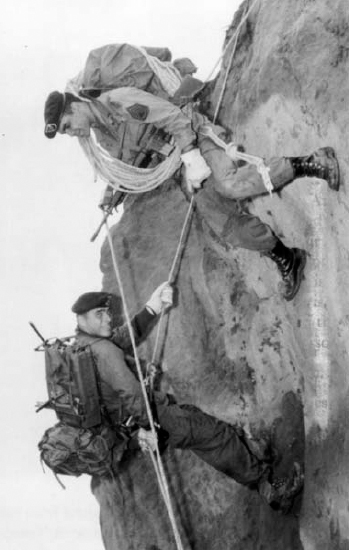
The post-Vietnam era saw many cutbacks in the strength of the Army, and SF did not escape intact. The 3rd SFGA was inactivated on 1 December 1969, followed by the 6th in 1971. The 5th and 7th SFGAs were to assume their African and Middle Eastern responsibilities. The 10th SFGA was moved from Germany to Ft Devens, Massachusetts in September 1969, but its Company A (redesignated 1st Battalion in 1972) remained at Bad Tölz, and the group as a whole still retained the European mission. Other SF units were also to remain in Germany. SF Detachment Europe had been activated on 11 July 1968 to provide command and control of SF elements there. Another was the 39th SF Detachment (redesignated a company in 1972) which had been activated on 1 September 1965. The 8th SFGA was inactivated on 30 June 1972 and its assets used to form the 3rd Battalion, 7th SFGA which continued with the former’s Latin American mission. The 1st SFGA was inactivated at Ft Bragg on 28 June 1974 leaving only SF Detachment Korea in that part of the world.
Besides the reduction of units, there were substantial manning cuts in the remaining ones. The SF Training Group was reorganised into the Institute for Military Assistance Student Battalion in 1972. (The Special Warfare Center had been redesignated the Institute for Military Assistance on 25 July 1969, and this title was to set the tone for SF operations for several years to come.) SF began to assume a low profile, which it would maintain until the early 1980s. Missions continued however, with the major emphasis on Latin America, although Europe and Africa were also to see SF teams. SF also began to undertake civic action missions in the States, among them ‘SPARTAN’ (Special Proficiency at Rugged Training and Nation Building) directed towards American Indians.
The threat of the terrorist emerged in the 1970s. The US responded to this by forming 1st SFOD D on 20 July 1978 at Ft Bragg. ‘Delta Force’s’ mission is counter-terrorism, and is under the Joint Special Operations Command. Another counter-terrorist unit was ‘Blue Light’, formed in 1977 by 5th SFGA and disbanded the following year: it was an interim unit organised for possible deployment until Delta Force was fully operational. Delta Force attempted to rescue the American hostages held in the US Embassy in Iran in April 1980. Delta elements also took part in the Grenada invasion in October 1983.

Two methods of rappelling are demonstrated by 6th SFGA NCOs in Georgia. The lower man, with an AN/PRC-74B radio, is executing the standard rappel while the other conducts an ‘Australian’ rappel. (US Army)
The early 1980s began to see a re-emergence of interest in special operations in the US military. SF began a relatively fast recovery with this new rediscovery of its capabilities. Unit manning authorisations were increased, new equipment was developed, and levels of training raised. The 1st Special Operations Command was activated at Ft Bragg on 1 October 1982. Its mission is to standardise training, and it is responsible for the preparation, employment, and sustaining of all US Army special operations forces, which includes SF, Ranger, psychological operations, and civil affairs units. The Institute for Military Assistance was redesignated the Special Warfare Center once more on 1 April 1983. On 15 March 1984 the first elements of the 1st SFGA were reactivated at Ft Bragg and deployed to Okinawa. The remainder of the group was activated on 2 September 1984, with the 1st Bn. on Okinawa and the remainder at Ft Lewis, Washington. It assumed its old area of responsibility.
A series of exercises designed to test the deployment of the Rapid Deployment Force were conducted in Egypt from 1982 to 1984. These were known as Exercise ‘Bright Star’ and elements of the 5th SFGA have taken part in all of them. Elements of 1st Bn., 7th SFGA have been in Honduras since June 1983, training Salvadorian and Honduran troops in counterinsurgency methods. Other SF units are currently concentrating on strategic reconnaissance and direct action missions.